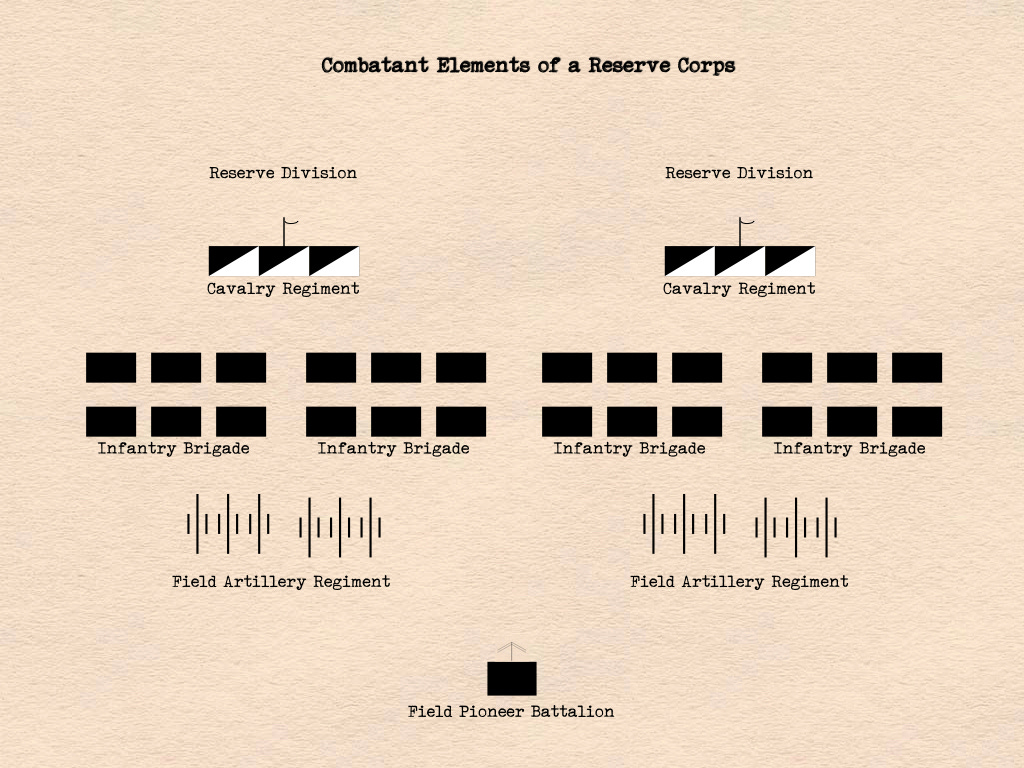Once the elements of each active army corps boarded the trains that would take them to war, the armies of the German Empire began to form reserve corps. These second-line formations differed from active army corps in three important ways. First, where the units assigned to active army corps were peacetime units that had been expanded, most of the component battalions, batteries, and squadrons of reserve army corps were created in the course of mobilization. Second, where the privates of army corps tended to be men in their early twenties, those of reserve corps were somewhat older. Third, where active corps were well supplied with cavalry, artillery and fixed-wing aircraft, reserve corps made do with smaller cavalry regiments, half as much field artillery, little (if any) heavy artillery, and no aircraft at all.
In contrast to the second-line formations of many other countries, the reserve corps of the German Empire wielded weapons of the same vintage as the armament of their active counterparts. Nonetheless, only two of the fourteen reserve corps mobilized at the start of the war received 105mm light field howitzers. (The XII. Reserve Korps, composed largely of elements belonging to the army of the Kingdom of Saxony, went to war with 36 light field howitzers, which was as many as an active army corps. The XIV. Reserve Korps, which contained a division provided by the Kingdom of Württemberg, possessed a single battalion of 18 light field howitzers.)
Sources: Information about the structure of reserve corps comes from the organizational appendix of Die Grenzschlachten im Western (“The Frontier Battles in the West”), the first volume of Der Weltkrieg, the German official history of the First World War.



